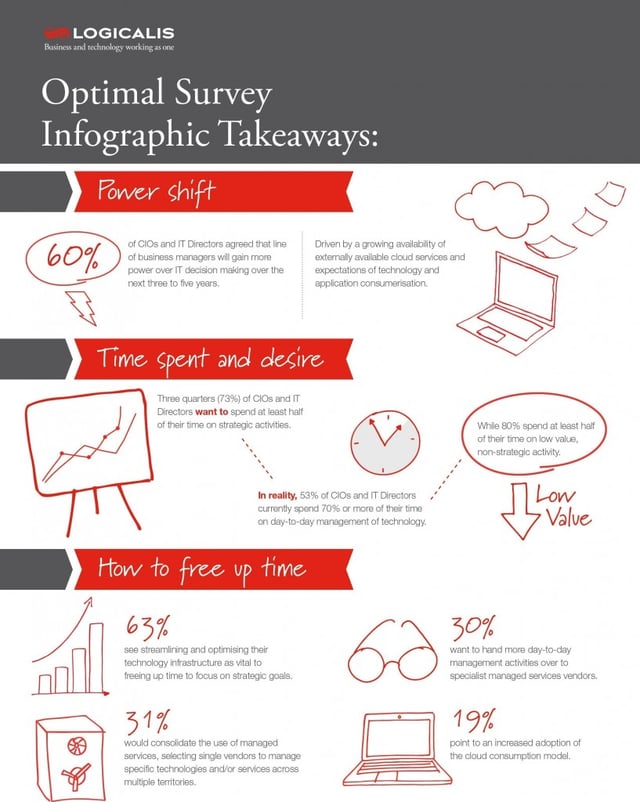Chris Gabriel looks at the changing role of the CIO and argues that, far from becoming irrelevant in a new ‘agile business’ reality, the CIO will be more important than ever – driving a services-led transformation of the IT function, from overhead to pseudo service provider and vital business enabler.
The IT function, so the theory goes, is therefore becoming irrelevant to the business and lines of business that can now choose from hundreds of service providers offering every conceivable application or infrastructure service via every possible consumption and delivery model.
Meanwhile, industry analysts still contend that the average IT department still spends around 80% of its budget servicing technology buying decisions made five or ten years ago. That suggests the gap between demand for business innovation and the CIO having the time, money and resources to deliver it is not closing, but widening.
That view is borne out by a survey carried out by Logicalis recently. We asked CIOs from almost 200 mid-sized enterprises worldwide a range of questions about their roles, how their time is spent and so on. The results? Worldwide, 53% of CIOs currently spend 70% or more of their time on day-to-day management of technology, while 80% spend at least half of their time on low value, non-strategic activity.
So, with much of their time dominated by maintenance and management, how can CIOs compete against service providers who have tapped into rich seams of investment, and technology vendors positioning cloud as the ‘only option’ for future IT provision? And how can they possibly keep up with demand for business innovation when they are held back by a colossal legacy ball and chain?
The answer, I believe, is to accept which way the wind is blowing but, rather than allow themselves to be sidelined, re-invent the role of the CIO and the IT function. Because, behind the perceived threat from the cloud and service providers, there is an opportunity – an opportunity to create a new kind of IT department acting as a critical connector between the business and its technology and IT service needs and the range of providers the business may choose to work with.
In short, the IT function can become a kind of pseudo service provider, freed from the burden of supporting legacy technology and instead focused on selecting and delivering technology solutions that support business agility and which are aligned with a wider business strategy.
As it happens, CIOs worldwide tend to agree, according to our survey. They want to streamline and optimise their existing technology, and they want to put more technology in the hands of managed services partners. Why? Quite simply to free up more time to focus on higher value activities – our survey tells us that three quarters of CIOs want to spend at least half of their time on strategic developments.
And what do they want to do with the time they get back? They want to focus on mobility and business analytics. They want to make best use of technology budget by ensuring that technology investments are focused on ‘enabling the business’ strategic goals’. And they want to maximise the lifecycle value of technology investments.
In short, they want to transform their organisations away from the role of Information Technology experts, advisors and providers, and towards what I call the Internal Enterprise Service Provider (IESP).
The IESP is an organisation comparable with the managed and cloud service providers – that is, armed with compelling services portfolios coupled with agile operational, cost and consumption models.
Judging by the findings from our survey, the will is there – the real question is how best to effect such a radical, yet overdue, transformation.
Other resources:
CIOs seek to maintain relevance through service-led transformations


